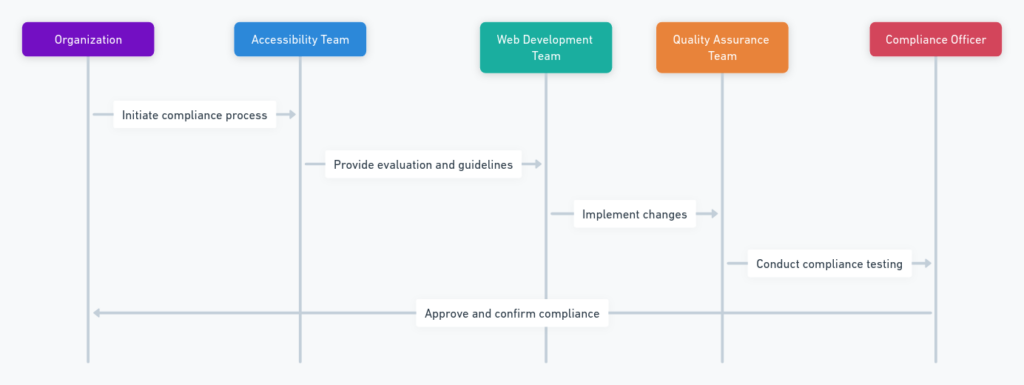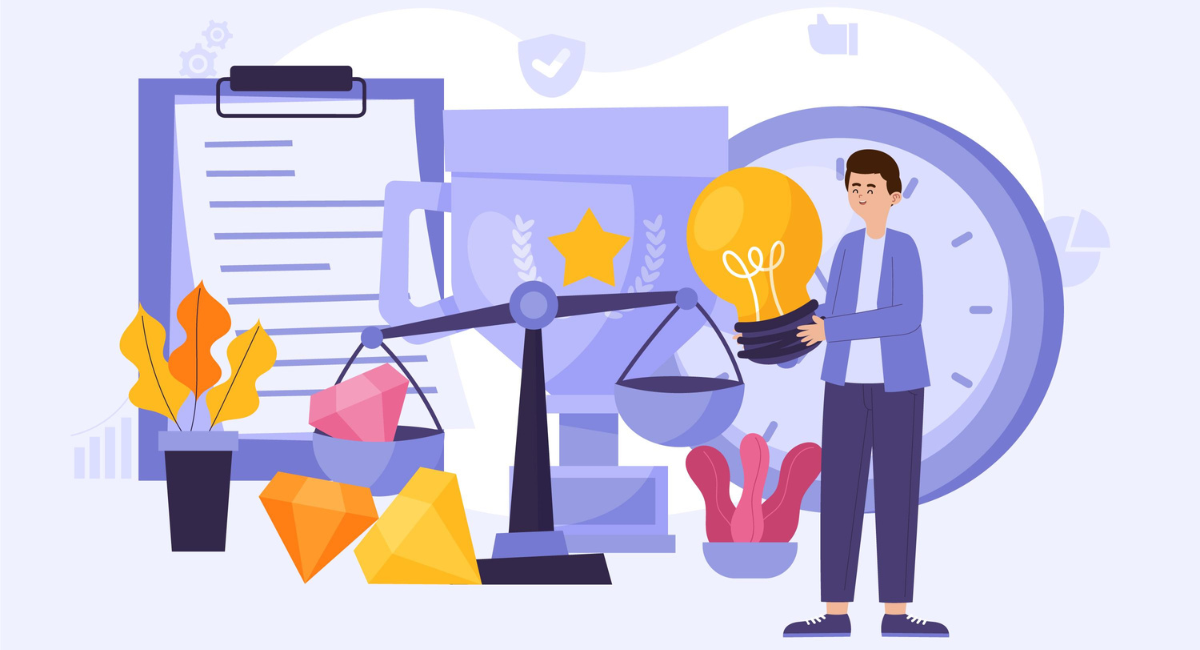The Web Content Accessibility Guidelines (WCAG) rules were established with the intention of creating a single global standard for web accessibility that meets the needs of individuals, organizations and governments worldwide.
WCAG 2.2's aim is to provide updated guidelines for improving accessibility for various disabilities, such as vision loss, hearing loss and cognitive deficits.
Understanding WCAG 2.2 is critical for developers, content creators and website owners who wish to ensure that their websites are accessible to all individuals regardless of physical limitations.
This version builds on previous standards such as WCAG 2.1 by increasing guidelines and adding success criteria intended to make web content more usable by people living with disabilities.
Understanding WCAG 2.2 Rules
Overview of WCAG Rules
The Web Content Accessibility Guidelines (WCAG) have been created through a collaborative process led by W3C that involves individuals and organizations worldwide.
Their aim is to establish one shared standard for website accessibility that can meet the needs of individuals, organizations, governments worldwide.
Specifically they address barriers individuals with visual, auditory, physical, speech, cognitive language learning neurological disabilities face when accessing website content.
Evolution to 2.2 Standards
WCAG 2.2 is an incremental update to web accessibility guidelines that builds upon WCAG 2.1 and has three primary goals. They aim to increase guidance for three groups, specifically people with cognitive or learning disabilities, low vision impairments, and disabilities on mobile devices.
WCAG 2.2 includes additions that aim to provide a better user experience as well as ensure the web remains accessible for all regardless of impairments or challenges they might encounter online.
Impact on Accessibility The incremental updates between WCAG 2.1 and 2.2 emphasize improving user interaction and clarity for those with disabilities who use online content, directly impacting how these users access and navigate it.
Providing clearer criteria and recommendations leads to more accessible design practices which benefit a variety of users including those over 60 with additional needs for web interactions.
Key Changes of WCAG 2.2
New Success Criteria
WCAG 2.2 provides several new success criteria intended to increase accessibility:
- Accessible Authentication: Assures that steps involving user authentication are accessible for those with disabilities.
- Redundant Entry: Redundant entry reduces the need for repeated input from users, which can be particularly helpful for those with cognitive or physical limitations.
- Dragging: Provides alternatives for users unable to perform the dragging movements necessary for interacting with components and pages.
Enhance User Experience
The enhanced user experience criteria set out by WCAG 2.2 aim at making web content more intuitive and easier for visitors to navigate, such as clearer labeling and instructions for custom controls.
Furthermore, timeout periods must be generous enough so as to accommodate users with disabilities who may require more time reading and using web content effectively.
Addressing Disabilities for Success (ADESH)
WCAG 2.2 places great emphasis on meeting the needs of specific disability groups:
For users with cognitive disabilities, there are guidelines aimed at making navigation simpler and reducing errors due to complex or unclear instructions.
Users with low vision may benefit from guidelines requiring better contrast, and options to customize text appearances without jeopardizing content functionality.
Mobile accessibility has also been improved, providing equitable access across devices for users of all kinds, especially those with physical disabilities who rely on mobile technology for ease of use and accessibility.
By placing greater focus on these areas, WCAG 2.2 helps create an inclusive web environment, catering to more types of disabilities than ever before.
Implement WCAG 2.2 Compliance in Your Organization

Strategies for Compliance
To comply with WCAG 2.2, compliance begins by understanding and applying its core principles - perceivable, operable, understandable and robust.
Conduct an initial website audit to identify any areas that don't meet accessibility standards before adapting content and design elements - such as adding alt text for images and keyboard-friendly navigational elements - that fail.
Once identified, provide alternative text when needed or adapt content so it is understandable by users with various disabilities. Continuing staff training on accessibility principles as well as updates to WCAG guidelines can ensure compliance over time.
Tools and Resources
A wide variety of tools and resources exist to assist with attaining and maintaining WCAG 2.2 compliance.
Automated accessibility testing tools like WAVE, Axe or Google Lighthouse can quickly identify technical issues which need addressing; more detailed insight can be gained through user usability testing with real users with disabilities.
Additionally governmental and non-profit organization resources provide guides and best practices on web accessibility standards implementation, which provide invaluable training and reference material.
Case Studies of Successful Implementation
Many organizations have successfully adopted and set benchmarks in accessibility with WCAG 2.2 standards. One major university updated its digital infrastructure to fully support accessibility, leading to a 50% increase in engagement from users with disabilities.
They achieved this through conducting systematic audits on all of their website presence, making necessary modifications, training content creators and IT staff on accessibility standards, as well as creating ongoing improvement efforts within accessibility efforts.
Such cases demonstrate the necessity of having a commitment strategy as part of any ongoing accessibility improvement initiative.
Benefits of Compliance with WCAG 2.2 Standards
Complying with WCAG 2.2 directly impacts user engagement. Websites accessible to all visitors, including those with disabilities, experience higher time spent on site, lower bounce rates, and greater interaction with content.
Accessible sites allow people with various limitations including visual, auditory, motor, cognitive or sensory to navigate and engage more easily with online content for enhanced user experiences and satisfaction.
Legal and Ethical Considerations of Outsourcing Services Providers
Adherence to WCAG 2.2 guidelines is both legal and ethical obligations in many jurisdictions, as businesses who strive to make their websites accessible demonstrate social responsibility by encouraging inclusivity.
Furthermore, doing so prevents legal repercussions related to noncompliance with global standards or national laws which increasingly emphasize WCAG compliance.
Search Engine Optimization Benefits for Accessibility
Apart from its obvious user and ethical benefits, aligning a website with WCAG 2.2 can also greatly enhance its search engine optimization (SEO).
Search engines favor websites that offer users a positive user experience, with accessibility improvements like optimized image alt texts, logical structure, and clear headings providing benefits to all.
This can lead to higher organic search rankings, more site traffic, and increased visibility among target audiences, including those with disabilities.
Challenges and Solutions in Achieve Compliance

Common Hurdles
Accomplishing compliance with WCAG 2.2 involves navigating several common obstacles.
Chief among them is lack of awareness and understanding regarding WCAG 2.2 standards - especially among small to mid-sized enterprises without dedicated accessibility teams.
Other difficulties may include retrofitting existing content to meet new guidelines - which is both time consuming and expensive; furthermore, technology advances often outpace any updates in accessibility regulations, leaving certain websites out-of-compliance.
Mitigation Strategies
To overcome these obstacles, there are various effective strategies available:
- Education and Training: Conducting regular education sessions on WCAG standards and accessibility best practices among web developers and content creators.
- Automated Tools: By employing automated accessibility testing tools to quickly detect and rectify noncompliant elements more quickly.
- Integrating Accessibility From the Beginning: Prioritizing accessibility when starting any development project can significantly reduce costly retrofits later.
- Consultation With Experts: Engaging accessibility consultants or services can provide invaluable expertise and insights that help ensure compliance efforts.
Long-Term Sustainability
Ensuring long-term sustainability for WCAG compliance requires organizations to shift their culture away from prioritizing accessibility, with ongoing education, regular audits and web content and technology updates tailored towards the latest standards being provided for compliance purposes.
Institutionalizing accessibility within corporate policy can also make meeting WCAG guidelines part of business operations processes.
Future of Web Accessibility
Emerging Technologies and Trends
Web accessibility appears to be closely tied with emerging technologies like artificial intelligence (AI), augmented reality (AR), and voice recognition systems.
These innovations hold great promise to improve the user experience for those with disabilities - for instance AI can personalize web experiences for visitors or create intuitive navigation aids, while AR provides visual aids or contextual information that increases comprehensibility of web content.
Potential Impact on WCAG Guidelines
As these technologies become more integrated into web environments, the WCAG guidelines may evolve to incorporate new standards that reflect these advancements.
This may include more stringent criteria to ensure AI-generated content is accessible or guidelines to address VR/AR experiences.
Continuous Enhancement in Accessibility Standards
Web accessibility continues to expand rapidly, prompting organizations such as the World Wide Web Consortium (W3C) to update and refine the Web Content
Accessibility Guidelines (WCAG), taking into account technological developments as well as feedback from communities of people with disabilities.
This ongoing improvement ensures web accessibility remains inclusive for all users regardless of changes in technology or user needs.
Book a Demo and experience ContextQA testing platform in action with a complimentary, no-obligation session tailored to your business needs.
Conclusion: Adopting the Web Content Accessibility Guidelines 2.0 for Inclusive Web Design
Integrating WCAG 2.2 guidelines into web design is crucial to creating an inclusive digital environment where accessibility is prioritized.
By adhering to these standards, web developers and content creators can ensure their websites are navigable and understandable for all users regardless of ability.
Implementation not only meets legal compliance standards but also fulfills social responsibilities by improving user experiences and widening audience reach - reflecting forward-thinking mentalities which value all members of their community while setting standards for future innovations in web accessibility.
Also Read - Build vs Buy software testing framework
